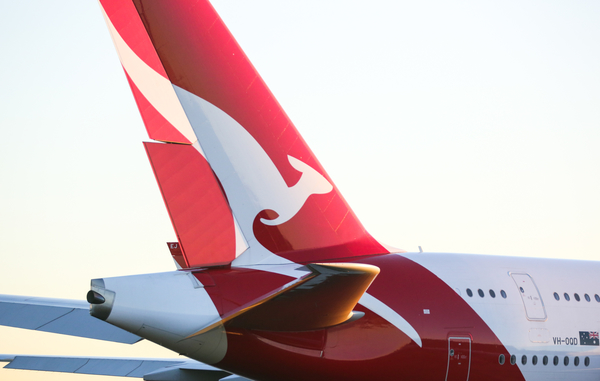Anyone working in aviation will tell you that we don’t speak in whole sentences. Most words are abbreviated – it makes it easier to understand what is being said on radio – and we can be sure that the right message is being heard.
So we’ll say A/C for aircraft (not air-conditioning) and PAX for passenger and seriously, even QANTAS is an abbreviation for Queensland and Northern Territory Aerial Services.
Whole conversations and situations that could take a few minutes to explain can be communicated in a matter of seconds.
Here’s a typical interaction in Aviationese – which is the second language of anyone who works in or around aircraft.

Learn the phonetic alphabet – it’s a great party trick
PILOT: “Qantas MEL…Qantas 635.”
MOCO: “Qantas 635…go ahead.”
PILOT: “Qantas 635…we will arrive on blocks at 1500. Have 2 UMs, 2 WCHRs, 1 will need assistance to a taxi. Request a parking bay please.”
MOCO: “Copy that Qantas 635. 2 UMs, 2 WCHRs. You are for parking bay 26…2…6. See you on the ground Qantas MEL.
MOCO: “Kilo QF635 Arrival …Alpha.”
KILO: “Go ahead Alpha.”
MOCO: “QF635 Requests 2 WCHRs, one to the taxi rank, and 2 UMs.”
KILO: “Copy that Alpha.”
And in English
Pilot: “Qantas Melbourne Movement Control, this is Qantas flight QF635.”
Movement Control: “Hello Qantas flight 635, how can we help?”
Pilot: “Hello, advising our estimated arrival time will be 3pm, we have two unaccompanied minors and two people requiring wheelchair assistance onboard. We will need extra ground crew to meet the aircraft and one customer requiring a wheelchair will also need assistance to a taxi. Can we have a parking bay, please?”
Movement Control: “Understood, we will have four gate agents meet the aircraft. Please park at bay twenty six. See you on the ground.”
Movement Control: “Calling gate agent meeting QF635, this is Movement Control.”
Gate Agent: “Hello Movement Control, how can we help?”
Movement Control: “The QF635 requires extra assistance with two customers requiring wheelchairs, one that needs to go to the taxi rank, and two unaccompanied minors. Please arrange extra gate agents.”
Gate Agent: “No problem, Movement Control.”
We have so many abbreviations that we have our own glossary of terms which new Qantas employees can study to get the lingo. Here’s a few examples

The APU is tucked right at the back of the tail. You can see the exhaust nozzle above
APU: Auxiliary Power Unit – small engine at rear of plane used to power the aircraft (lights, air-con, flights systems) when the engines on the wings aren’t running.
ATB: Air Turn Back – when the Captain decides to return to the airport instead of continuing to destination. This might be due to a sudden change in weather, a passenger who has taken ill or an issue with the aircraft.
ACARS: Aircraft Communications Addressing and Reporting System, basically like an SMS system in the cockpit, except it works when you’re in the middle of nowhere. Also why abbreviations are helpful.
CONFIG: Layout of the aircraft including how many seats in each different passenger cabin
CSM: Customer Service Manager – the most senior member of cabin crew onboard
CX: Cancelled. (Sorry…)
ETOPS: This is approval for certain types of aircraft with two engines to fly long distances over water and stands for extended range twin engine operations, not to be confused with EFTPOS (cheque or savings?)
FOD: Foreign object debris – this is anything like rubbish or material that is found on the airport taxiways and runways and could potentially damage tyres of the aircraft. No one likes FOD, so that’s why airports do “sweeps for FOD” on a regular basis.
J and Y: Business Class and Economy Class cabins respectively
NOTAM: Notice to Airmen – information for pilots on airports/ air traffic control (a bit old school and not gender neutral, but well understood)
PAX: Passengers
RNP: Required Navigational Performance – a strange name for a very sophisticated form of GPS in the cockpit, which is incredibly precise and allows aircraft to fly safely in low visibility.
TOGA: Take Off, Go Around – this is an aircraft throttle setting that basically means maximum power, and is used when the Captain decides to abort a landing approach and try again (this can be for lots of reasons, including visibility, wind, or an obstacle on the runway).
UM: Unaccompanied minor, young person travelling alone
WX: weather
And if you really want to impress your friends the next time you’re at a party, why not recite the entire phonetic alphabet which you can find here.
Even your local airport has an abbreviation, we hear that CGK is nice this time of year – click here to find out what your code is.